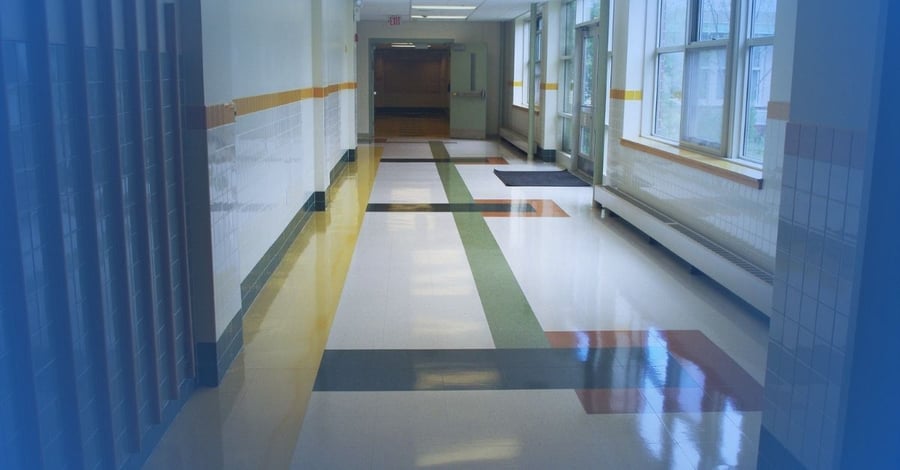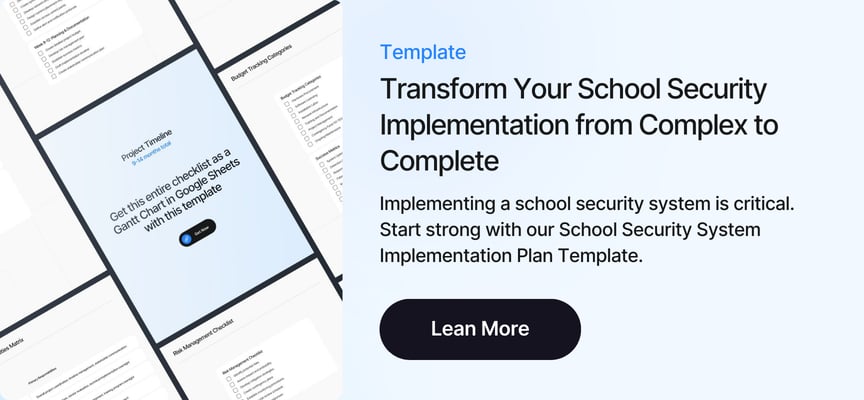Key Points
- Multi-layered prevention is essential: Effective gun safety in schools requires technology-based detection systems working alongside human-centered strategies to create comprehensive safety barriers before incidents occur
- Response speed saves lives: AI-powered weapon detection systems can identify firearms within seconds and immediately alert security teams, while traditional methods often rely on post-incident investigation
- Recovery planning builds resilient communities: Post-incident protocols must address immediate trauma response, community healing processes, and systematic improvements to prevent future occurrences
- Integrated systems maximize protection: Modern school gun safety strategies combine real-time AI detection, human validation, emergency response coordination, and continuous facility monitoring
- Proactive technology transforms school security: Advanced video intelligence systems monitor 100% of camera feeds continuously, shifting educational institutions from reactive to preventive safety models
What is Gun Safety in Schools? Understanding Critical Security Challenges
Gun safety in schools encompasses comprehensive strategies designed to prevent, respond to, and recover from firearm-related threats in educational environments. This approach includes weapon detection technology, emergency response protocols, and community support systems that work together to protect students, staff, and visitors.
The modern school safety challenge demands sophisticated solutions because traditional security approaches often fall short. Most schools operate with significant blind spots in their security coverage, with fewer than 5% of camera feeds monitored in real-time during normal operations, leaving critical gaps in threat detection capabilities.
Educational institutions need gun safety measures that balance comprehensive protection with maintaining positive learning environments. Effective programs integrate advanced technology with human expertise to create safety frameworks that enhance rather than diminish the educational experience.
Read the full school safety guide.
School Gun Safety Prevention Strategies: Building Multiple Protection Barriers
Effective gun safety in schools begins with robust prevention strategies that address potential threats before they materialize. These comprehensive approaches require both technological capabilities and human-centered methodologies working in seamless coordination to create multiple layers of protection.
Prevention systems must operate continuously across entire school campuses, providing coverage that traditional security measures cannot match. The most effective strategies combine advanced detection capabilities with immediate alert systems that enable rapid intervention when potential threats are identified.
Read our Guide on Gun and Weapon Detection Through AI.
AI-Powered Weapon Detection Technology for Schools
Advanced AI-powered detection systems represent the cornerstone of modern school gun safety prevention programs. These intelligent systems analyze video feeds in real-time, identifying potential weapons before they can be used in harmful ways, providing crucial seconds that can mean the difference between tragedy and prevention.
Modern weapon detection technology for schools can identify firearms even when partially concealed or held at a person's side. The system immediately alerts security personnel and can automatically notify law enforcement when weapons are detected, creating rapid response opportunities that traditional methods cannot provide.
School Security Technology Comparison
Detection Method | Coverage Area | Response Time | Integration Requirements |
Traditional Security Cameras | Limited to staffed areas | Post-incident only | Existing infrastructure |
AI-Powered Video Intelligence | 100% camera coverage | Real-time (2-15 seconds) | Seamless integration |
Metal Detectors | Entry points only | During screening | New infrastructure required |
Security Personnel Patrols | Limited patrol areas | Variable response | Staffing and training |
The integration of 3D facility mapping enhances prevention capabilities by providing comprehensive spatial awareness. Security teams can track individuals throughout facilities, maintaining visual contact even after weapons are concealed, ensuring continuous monitoring and threat assessment.
Essential Gun Safety Prevention Technology Features:
- Continuous real-time analysis: 24/7 monitoring of 100% of camera feeds without human fatigue limitations
- Advanced weapon recognition: Detection of firearms regardless of concealment method or carrying position
- Privacy-conscious monitoring: Behavioral analysis without facial recognition technology to address community privacy concerns
- Seamless infrastructure integration: Compatible with existing camera systems without requiring hardware replacement
- Multi-channel instant alerts: Immediate notification to security teams through smartphones, smartwatches, and communication systems
Human-Centered School Safety Approaches
Technology alone cannot address gun safety in schools comprehensively. Human-centered prevention strategies create additional safety barriers through community engagement, threat assessment protocols, and comprehensive support systems that address underlying risk factors.
Anonymous reporting systems enable students and staff to report potential threats without fear of retaliation. These systems have proven highly effective in preventing planned attacks when combined with proper threat assessment protocols and rapid response capabilities.
Prevention Strategy Implementation Timeline
Implementation Phase | Duration | Key Activities | Technology Integration |
Security Assessment | 2-4 weeks | Comprehensive audit, stakeholder input | Camera inventory, coverage analysis |
Strategic Planning | 3-6 weeks | Protocol development, training design | System configuration, alert rule setup |
System Deployment | 1-2 weeks | Technology installation, initial training | AI model activation, alert testing |
Ongoing Optimization | Continuous | Performance monitoring, refinements | Machine learning, alert tuning |
Mental health support services provide crucial prevention capabilities by addressing underlying factors that may contribute to violent behavior. Comprehensive staff training programs ensure that human responders can effectively utilize technological capabilities while maintaining positive school environments.
Emergency Response Protocols: Rapid Detection and Coordinated Action for School Gun Safety
Effective response protocols transform the critical moments when threats are detected into opportunities for prevention and protection. These protocols require seamless coordination between technology systems, security personnel, and emergency responders to maximize safety outcomes during high-stakes situations.
Response effectiveness in school gun safety depends on detection speed, alert accuracy, and coordinated action protocols. Modern AI systems can provide weapon detection alerts within seconds, but human validation ensures appropriate response to confirmed threats while eliminating false positives that could disrupt educational activities.
Real-Time Weapon Detection and Alert Systems
Instantaneous weapon detection provides the foundation for effective emergency response protocols in schools. AI systems analyze video feeds continuously, identifying potential weapons and immediately initiating alert sequences to security personnel, creating rapid response opportunities that can prevent tragedies.
Human validation through trained security operations centers ensures alert accuracy while maintaining rapid response times. Every weapon detection alert receives professional human review within seconds, eliminating false positives while confirming genuine threats and authorizing appropriate escalation measures.
Emergency Response Protocol Activation Sequence:
- Detection Phase (0-2 seconds): AI system identifies potential weapon in video feed and captures relevant footage for immediate analysis
- Validation Phase (2-15 seconds): Human operator reviews detection, confirms threat level, and authorizes appropriate response escalation
- Alert Phase (15-30 seconds): Verified alerts reach designated security personnel, administrators, and emergency responders through pre-configured communication channels
- Response Phase (30+ seconds): Security teams coordinate immediate response while law enforcement receives precise location and situational intelligence
- Tracking Phase (Continuous): 3D mapping systems maintain visual contact with threat throughout facility, providing real-time location updates to responders
Automated emergency response protocols can trigger lockdown procedures, emergency announcements, and law enforcement notifications based on threat severity. These systems operate according to predefined escalation policies that ensure appropriate response to different threat levels while minimizing disruption to educational activities.
Read our Guide to School Shooting Prevention Technology.
Coordinated School Safety Response Teams
Multi-disciplinary response teams ensure comprehensive threat management during critical incidents. These specialized teams include security personnel, administrators, mental health professionals, and law enforcement liaisons working together to address gun safety emergencies effectively.
Communication protocols establish clear chains of command and information flow during emergencies. Real-time intelligence from AI systems provides response teams with continuous situational awareness throughout incidents, enabling informed decision-making and coordinated action.
Essential Response Team Components for School Gun Safety:
- Security coordination: On-site security personnel trained in system operation and threat response protocols
- Administrative leadership: School administrators authorized to make critical decisions during emergency situations
- Mental health support: Crisis intervention specialists prepared to address immediate psychological needs
- Law enforcement liaison: Direct communication channels with local police and emergency responders
- Communication management: Designated personnel responsible for coordinating information flow and community updates
Recovery and Resilience Planning: Building Stronger School Communities After Gun Safety Incidents
Recovery planning addresses the complex needs of school communities following gun safety incidents. These comprehensive plans must address immediate trauma response, community healing processes, and systematic improvements that strengthen future safety measures while helping communities rebuild and move forward.
Effective recovery strategies recognize that school communities require both emotional support and practical security enhancements. Recovery planning begins before incidents occur, establishing frameworks that can be activated immediately when needed to provide coordinated support and systematic improvement.
Post-Incident Support Systems for Schools
Immediate trauma response protocols provide essential support for students, staff, and families affected by gun safety incidents. These protocols coordinate mental health resources, communication strategies, and community support services to address the complex aftermath of security events.
Crisis counseling services offer specialized support for individuals experiencing trauma following safety incidents. Professional counselors trained in crisis intervention provide both immediate and long-term therapeutic support, helping community members process experiences and begin healing.
Post-Incident Recovery Framework
Recovery Phase | Timeline | Primary Focus | Technology Role |
Immediate Response | Hours 1-24 | Safety stabilization, emergency support | Incident documentation, evidence preservation |
Short-term Recovery | Days 1-30 | Trauma counseling, communication management | System analysis, performance review |
Long-term Healing | Months 1-12+ | Community rebuilding, ongoing support | Enhanced monitoring, system improvements |
Communication strategies ensure accurate information flow while protecting privacy and dignity of those affected. Family support services provide resources and assistance for families directly impacted by incidents, creating comprehensive support networks during difficult recovery periods.
Learning and Improvement Protocols
Systematic incident analysis identifies opportunities for safety improvements and protocol enhancements. This analysis examines both technological performance and human response effectiveness to strengthen future prevention and response capabilities across all aspects of school gun safety.
Technology system improvements incorporate lessons learned from actual incidents and response exercises. AI models receive additional training data to enhance detection accuracy and reduce false positive rates, continuously improving system performance and reliability.
Continuous Improvement Process for School Gun Safety:
- Performance analysis: Comprehensive review of system response times, detection accuracy, and human coordination effectiveness
- Protocol refinement: Updates to emergency procedures based on real-world performance and stakeholder feedback
- Training enhancement: Improved preparation programs for security personnel, administrators, and response teams
- Community integration: Ongoing dialogue with students, parents, and staff to ensure safety measures align with educational mission
- Technology optimization: Regular updates to AI models and system configurations based on operational experience
Frequently Asked Questions About Gun Safety in Schools
How effective are AI-powered weapon detection systems compared to metal detectors in schools?
AI-powered weapon detection systems provide 100% camera coverage and real-time alerts within seconds, while metal detectors only monitor entry points during screening. AI systems can detect weapons even when concealed and don't create bottlenecks or prison-like atmospheres that metal detectors often generate.
What is the average response time for AI weapon detection in schools?
Advanced AI systems can detect weapons within 2 seconds and provide human-validated alerts within 15 seconds, compared to traditional methods that often rely on post-incident investigation. This rapid detection capability provides crucial time for intervention and prevention.
How do schools balance gun safety measures with maintaining a positive learning environment?
Modern gun safety technology operates invisibly in the background, providing comprehensive protection without disrupting daily educational activities. Privacy-conscious systems focus on behavioral analysis rather than individual identification, maintaining school climate while enhancing security.
What role does human validation play in AI weapon detection systems?
Human validation through trained security operations centers ensures alert accuracy while maintaining rapid response times. Every weapon detection receives professional review within seconds, eliminating false positives while confirming genuine threats.
How do gun safety prevention strategies address mental health concerns in schools?
Comprehensive gun safety includes mental health support services, anonymous reporting systems, and threat assessment protocols that address underlying risk factors. These human-centered approaches work alongside technology to create holistic prevention strategies.
Building Comprehensive School Gun Safety Frameworks: Technology Integration and Implementation
Comprehensive gun safety in schools requires integrated approaches that combine prevention, response, and recovery strategies into unified safety frameworks. These frameworks address the full spectrum of safety challenges while maintaining positive learning environments that support educational excellence.
Effective frameworks balance security measures with educational mission priorities. Safety technologies and protocols enhance rather than diminish the school experience, creating environments where learning can flourish without compromising protection or community values.
Comprehensive School Gun Safety Technology Stack:
- Detection Layer: AI-powered weapon recognition, behavioral analysis, and anomaly detection across 100% of camera coverage areas
- Analysis Layer: Human validation through security operations centers, threat assessment protocols, and risk evaluation systems
- Response Layer: Automated alert systems, emergency communication networks, and coordinated response protocol activation
- Coordination Layer: 3D facility mapping, real-time tracking capabilities, and multi-agency communication integration
- Documentation Layer: Incident recording, evidence preservation, and performance analysis for continuous improvement
Human expertise remains essential for framework effectiveness. Trained security professionals, mental health specialists, and emergency responders provide the human intelligence that technology systems support and enhance, creating comprehensive protection strategies.
Schools considering comprehensive gun safety implementation may benefit from exploring funding options to support these critical safety investments. Understanding why school safety is important helps administrators build community support for necessary security enhancements.
VOLT AI transforms existing security infrastructure into intelligent safety systems that address gun safety in schools comprehensively. Our real-time video intelligence provides the technological foundation for prevention, response, and recovery strategies that protect school communities while maintaining positive educational environments.
Schools implementing comprehensive gun safety frameworks create environments where technology and human expertise work together to prevent tragedy and protect lives. When every second counts in protecting students and staff, advanced detection and response capabilities provide the critical advantages that save lives and preserve educational missions.






